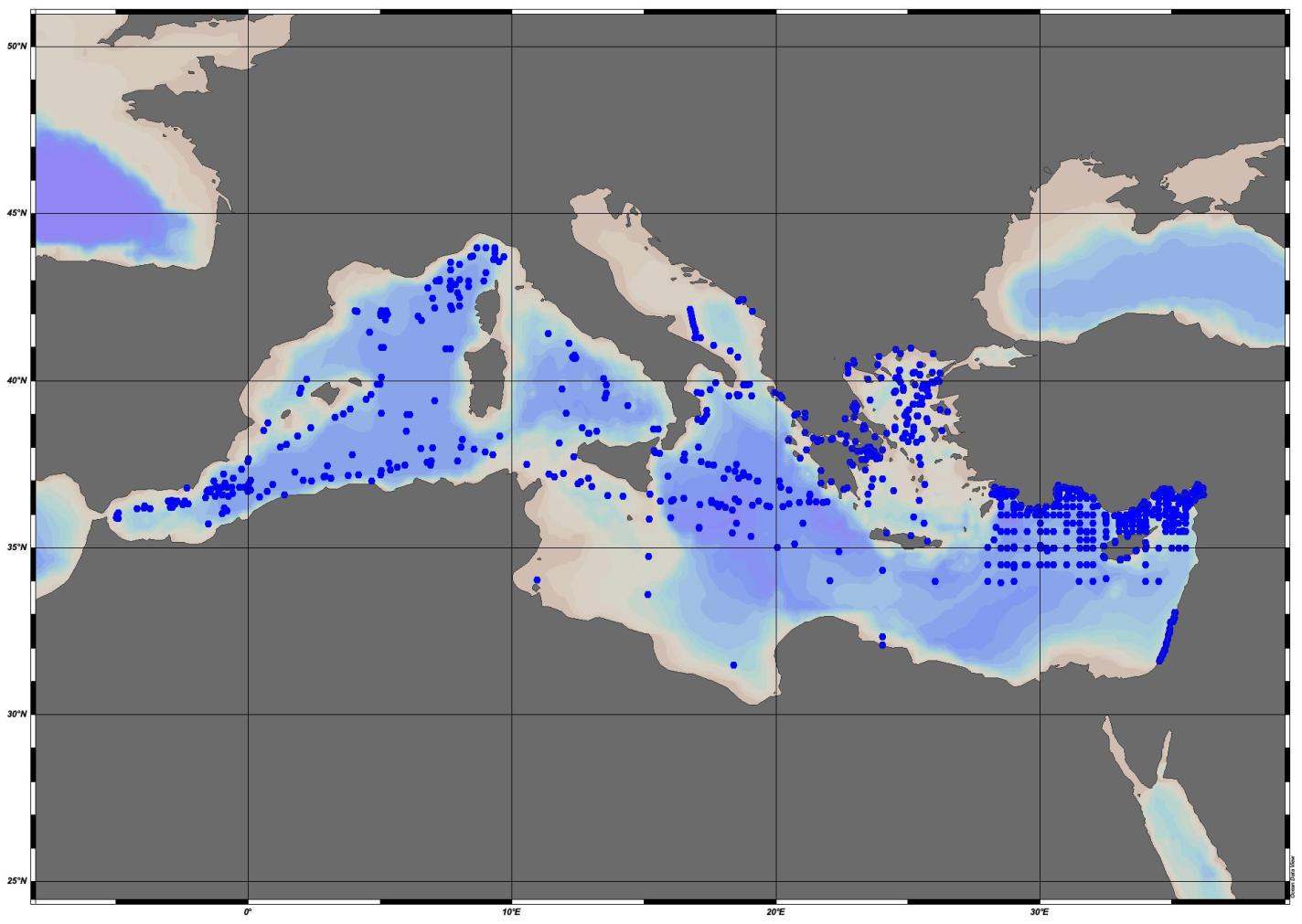Online, the new data collections for eutrophication and contaminants

The new data collections for eutrophication and contaminants have just been published. Each collection covers one of the following marine regions: Arctic Ocean, Baltic Sea, Greater North Sea, Northeast Atlantic Ocean, Mediterranean Sea, and Black Sea. They can be found on the EMODnet web portal in the section dedicated to EMODnet Chemistry Data and Products and in the central Products Catalogue.
The available data types are vertical profiles and time series. Vertical profiles are data collected roughly at approximately the same time and location for several consecutive vertical depths, whilst time series at the same location and depth but repeated in time.
The harvest of measured data was finalised for eutrophication in mid-June 2022 and for contaminants in early September 2022. This phase of the process is being coordinated by MARIS, EMODnet Chemistry technical coordinator. Initially, row data are gathered in the SeaDataNet Common Data Index (CDI) Data Discovery and Access Service and then an automated Robot Harvester is used to retrieve specific datasets from the distributed network of data centres (DCs) to obtain datasets per marine region. The regional data are provided to six regional coordinators (RCs) from the following organisations: AU-DCE (Greater North Sea), HCMR (Mediterranean, including Marmara Sea), IFREMER (NE Atlantic), NIMRD (Black Sea), SMHI (Baltic Sea), IMR (Arctic Ocean).
The RCs strive to aggregate, quality control, and regularly harmonise new datasets from dozens of data centres, which in turn collect data from hundreds of originators. It should be noted that the impressive amount of data, covering a wide range of parameters, are collected in different matrices, using a variety of platforms, devices and protocols, and analysed using many different tools and methodologies. In terms of matrices, data for eutrophication comes from the water column, while for contaminants they come from three different matrices: water, sediment and biota. The RCs update and upgrade the data collections, improve the quality and quantity of the associated information, and help to verify the adequacy of the vocabularies used and the standards and formats. In this way, they also play a key role in developing or enhancing tools and services for the creation of the data collections and related products.
The methodology agreed with the wider international community for aggregation, harmonisation and validation of data is set out in the guidelines EMODnet Chemistry Regional sea eutrophication data collection and Quality Control loop
The main numbers of the data collections are presented in the tables below by marine region. This includes the unrestricted data, which on average accounts for 95% of the data collected for eutrophication and 75% of the data for contaminants. The remaining percentage is accessible after negotiation according to the data policy agreed with the data owners.
|
|
||||
|---|---|---|---|---|
| Sea Basin | Originators (Tot. N.) |
Countries (Tot. N.) |
Time series (Tot. Stations) |
Vertical profiles (Tot. Stations) |
| Arctic Ocean | 49 | 7 | - | 134698 |
| Baltic Sea | 71 | 9 | 84 | 202054 |
| NE Atlantic | 107 | 15 | 561 | 397745 |
| Black Sea | 40 | 9 | 1 | 73493 |
| Mediterranean Sea | 102 | 21 | 13635 | 240860 |
|
|
||||
|---|---|---|---|---|
| Sea Basin | Originators (Tot. N.) |
Countries (Tot. N.) |
Time series (Tot. Stations) |
Vertical profiles (Tot. Stations) |
| Arctic Ocean | 13 | 3 | - | 1622 |
| Baltic Sea | 35 | 9 | 524 | 6355 |
| NE Atlantic | 21 | 9 | 536 | 3219 |
| Black Sea | 27 | 7 | - | 34804 |
| Mediterranean Sea | 47 | 17 | 6893 | 8182 |
